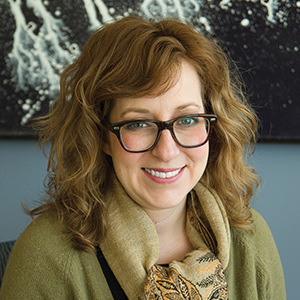Pointers for an industry career: part 3
This is the last article in a three-part interview series with Kenneth I. Maynard of Takeda Pharmaceuticals International Inc. about what it takes to launch and propel a career in the pharmaceutical industry. The first piece appeared in the August issue of ASBMB Today and gave tips on how to begin looking for industry positions. The second part appeared last month and discussed how a trainee can best prepare for a career in industry. This third part delves into the differences between doing research in academia and industry.

Maynard previously worked for Sanofi, Aventis Pharmaceuticals, Massachusetts General Hospital and Harvard Medical School. He is a member of the National Institutes of Health Common Fund’s External Scientific Panel for the Broadening Experiences in Scientific Training program. This Q&A has been edited for length, style and clarity.
What are some considerations for working in the pharmaceutical industry that may not be obvious to those working in academia?
You get to collaborate with top scientists and clinicians. World-class scientists are frequently interested in how their work could help the advancement of medicine and the treatment of patients. Many world-class scientists develop consulting relationships with companies. Through these consultancies, the scientists within these companies sometimes have direct access to discuss or collaborate with top-notch scientists.
You don’t need to write grants, but you still have to sing for your supper. For startup companies, much time is spent seeking funding to move the science or technology forward, at least in the beginning. You may spend much of your time writing Small Business Innovation Research and Small Business Technology Transfer grants to the National Institutes of Health as well as presenting and trying to convince various organizations, such as venture capital firms, angel investors and health care and technology startup accelerators, to fund your idea and company. In big pharma, you probably will not need to do that, but areas of interest within a big pharma company can disappear quickly purely due to business reasons. You are secure as long as it makes good business sense to continue funding R&D efforts in an area, but, once it becomes a financial drain on the company, it is not long before transformation hits and the area or indication can be de-emphasized.
You get a whole new world of career options. One thing that I was completely oblivious to while in academia was the number of career options in the pharmaceutical industry. Bench scientist, clinical scientist and group leader are probably well-known positions, but there are also scientific/medical writing, program management, marketing, market access, regulatory, outcomes research, intellectual property, business development — the list goes on. Once you get into big pharma, there are many options, including staying with a scientific or clinical path or pursuing a management or even a business path.
Benefits can be extensive. Financial benefits can be significant. However, there are innumerable other benefits, including career enrichment and recognition incentives; health screens; opportunities for your children, such as scholarships and cultural exposure in foreign countries; and access to a subsidized cafeteria. You get regular performance reviews. Individual development plans include promotion strategies and sometimes even tuition reimbursement for graduate degrees, such as MBAs.
In larger pharmaceutical companies, retaining top talent, reducing absenteeism, enhancing morale to help improve performance, productivity and efficiency, and promoting the company image in the eyes of society are important company goals. Employees sometimes can reap huge benefits from programs dedicated to addressing these aims. Employees are being offered flexible working conditions, which could include working from home, adaptable hours and work rotations. If you accept a position at a pharmaceutical company, typically it will offer a relocation package to help you move your family and household items if your home is more than 50 miles away from your place of work. Depending on your level of seniority, these packages can be quite extensive and even include help for your family to find schools for children and opportunities for acclimatization into a new community. Other personal benefits may be available, such as on-site nursery and day care facilities that are subsidized. In a building where I once worked, there was a full cafeteria, postal services, a fully furnished gym with various classes at low cost and incentives to join (free Fitbits!), a bank and a big-chain drugstore. You almost did not need to leave the building!
Larger companies sometimes offer time off to employees to help those in need independently or working with traditional national charitable organizations. For those for whom charitable giving is important, many companies match your giving up to several thousand dollars. I doubt that most people realize that many pharma companies do extensive philanthropic work, especially when there are natural disasters. They respond with drugs, logistics and funds that amount to several millions of dollars sometimes even for one event. Frequently, the employees of the company are the ears, hands and feet on the ground to help those in need.
Because of the need to keep employees motivated and to respond to their needs, time off can take many forms, not just for charitable purposes. Vacations are encouraged. Sometimes, a certain number of unused days can be rolled over to the next year so that you don’t lose all your vacation days if you are particularly busy one year. Your vacation allowance typically also increases based on loyalty, so the longer you are with the company, the more vacation days you receive. There is not only maternity but also paternity leave, time off for bereavement and floating holidays to allow you to make unplanned doctor visits or to deal with emergencies.
Two big challenges for academic principal investigators are funding and overcommitment. What are the biggest challenges for industry PIs?
As I said earlier, funding is a challenge for startup and biotechnology companies.
Productivity is the key challenge both in academia and in the pharmaceutical industry in order to be successful. With the current exorbitant costs of R&D and high failure rates along the R&D cycle, delivering drugs in a timely manner is critical for every company. At least part of the reason for company dissolutions and mergers is failure to send drugs to the market quickly enough to pay for this high cost of R&D. This pressure is passed along the R&D cycle at every step. If programs do not advance, they can be cut. If areas of R&D have high failure rates, then entire R&D sectors within a company can be cut, transformed, outsourced or approached in some other manner, including external innovation approaches.
From a scientific perspective, reproducibility in R&D can be challenging. It is exciting to find a novel approach in science. But reproducing these findings is important, because without reproducibility there is little confidence in moving forward with a project, as there is too much at stake in terms of resources. Reproducibility of results in terms of safety and efficacy is paramount, both from the company perspective and from a regulatory perspective. Consequently, safety studies typically are done in at least two different species of animals. A potential drug must be shown to be safe, tolerable and without toxicity before being allowed approval for testing in humans. Without this high level of reproducible scrutiny, compounds do not make it to clinical testing in humans. With regard to efficacy, reproducibility in the clinic is achieved both in phase II during so-called proof-of-concept studies and phase III studies, which are often done as two studies to show convincing and reproducible efficacy in humans.
The capacity to show translation of scientific results from animal models to patients is another significant challenge for industry PIs. In order to test hypotheses before entering clinical studies in humans, much work needs to be done in animals, including obtaining convincing safety and efficacy data. The ability to show that our research results in animals translate to what we find in clinical development in humans is a major hurdle. It is responsible for high failure rates in phase I and phase II trials, which focus primarily on safety and efficacy in humans. There is much pressure on both scientific and clinical PIs to show convincing data to support translatability in the pharmaceutical industry.
Any final thoughts?
There are many benefits and challenges for both academic and industry PIs. Any decision to transition from academia to industry needs to be very carefully, strategically and intentionally thought through. Ultimately, the question is not whether you should work in the pharmaceutical industry or not. The decision to pursue a career in the industry, similar to the consideration of a career in academia, should be, in my opinion, based on what it is you are passionate about and what contributions you wish to make. Answer that question first, and the rest becomes easier.
Enjoy reading ASBMB Today?
Become a member to receive the print edition four times a year and the digital edition weekly.
Learn moreFeatured jobs
from the ASBMB career center
Get the latest from ASBMB Today
Enter your email address, and we’ll send you a weekly email with recent articles, interviews and more.
Latest in Careers
Careers highlights or most popular articles

Who decides when a grad student graduates?
Ph.D. programs often don’t have a set timeline. Students continue with their research until their thesis is done, which is where variability comes into play.

Upcoming opportunities
Submit an abstract for ASBMB's meeting on ferroptosis!

Join the pioneers of ferroptosis at cell death conference
Meet Brent Stockwell, Xuejun Jiang and Jin Ye — the co-chairs of the ASBMB’s 2025 meeting on metabolic cross talk and biochemical homeostasis research.

A brief history of the performance review
Performance reviews are a widely accepted practice across all industries — including pharma and biotech. Where did the practice come from, and why do companies continue to require them?

Upcoming opportunities
Save the date for ASBMB's in-person conferences on gene expression and O-GlcNAcylation in health and disease.

Being a whole person outside of work
Creating art, community service, physical exercise, theater and music — four scientists talk about the activities that bring them joy.

